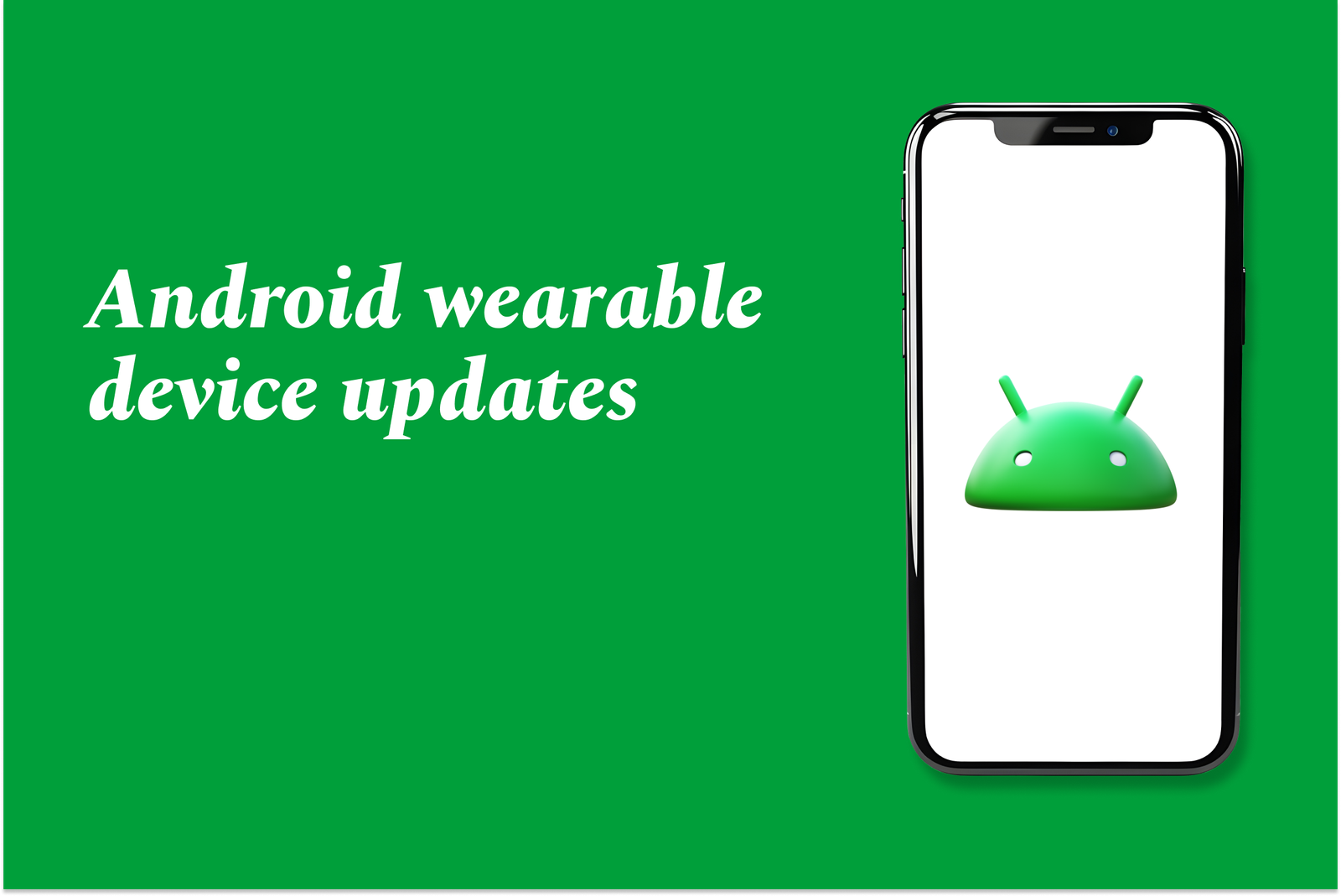Android Wearable Device Updates
Android wearable device updates improve smartwatch functionality, enhance app integration, boost health and fitness features, and fix bugs. These updates ensure smoother performance, better connectivity, and increased security, keeping wearable devices in sync with the latest Android and Wear OS advancements.
Android wearable device updates
1 ) Wear OS by Google Enhancements
Wear OS seamlessly connects users to health, communication, and apps from their wrist.
Key Google apps available on Wear OS include Gmail, Google Calendar, Google Maps, Google Assistant, YouTube Music, and Google Home.
These apps enable users to manage emails, schedules, navigation, voice commands, music, and smart home controls directly from their smartwatch.
2 ) Health and Wellness Features
Wear OS integrates wellness and fitness apps like MyFitnessPal, empowering users to track meals, habits, and fitness goals.
The platform aims to optimize workouts and overall wellness by leveraging a broad suite of health focused applications.
3 ) Samsung Galaxy Wearable App Overview
The Galaxy Wearable app connects Samsung wearable devices to mobile phones for managing device settings, software updates, apps, notifications, and finding the watch.
It requires stable Bluetooth connectivity between mobile and wearable devices to function properly.
The app supports various access permissions for features like location, calendar syncing, call and SMS log syncing.
It does not support Gear VR or Gear 360 and has limited support for tablets.
4 ) User Experience and Issues
Some users report difficulties with the Galaxy Wearable app, such as bugs, UI glitches after updates, and issues connecting older Galaxy Watch models to new phones.
A notable complaint is the forced deletion of watch data when pairing with a new phone, causing potential data loss.
Performance issues like failure to load settings and delayed face changes have been reported post updates.
5 ) Developer and Security Notes
Google and Samsung regularly update wearable device software to enhance functionality and security.
Data privacy safeguards include encrypted transit and restricted data sharing, striving to protect user information.
Updates improve device compatibility, app performance, and introduce new features across Android and Wear OS platforms.
Summary:
Android wearable devices, especially those running Wear OS, continue to receive updates enhancing app integration, wellness features, and user connectivity. While Wear OS provides a rich ecosystem of Google apps for on wrist productivity and health management, Samsung's Galaxy Wearable app manages device pairing and settings but is facing user criticism for bugs and connectivity issues with recent updates. Ongoing updates aim to improve stability, security, and user experience across Android wearable devices.
https://justacademy.in/news-detail/android-malware-protection-improvements
https://justacademy.in/news-detail/flutter-community-meetups-in-2025
https://justacademy.in/news-detail/flutter-theme-extensions-in-latest-version
https://justacademy.in/news-detail/breaking-changes-in-latest-flutter-version
https://justacademy.in/news-detail/flutter-for-embedded-systems-2025
Related Posts
In 2025, top Angular libraries offer modern, feature-rich components and tools for building dynamic web apps. From powerful data grids to low-code platforms like UI Bakery, these libraries enhance development speed, UI design, and scalability, making them essential for Angular developers.
Migrating from AngularJS to Angular 17 involves gradually upgrading your app by running both frameworks together using tools like ngUpgrade, rewriting components in TypeScript, and adopting Angular’s modern architecture to enhance performance, maintainability, and long-term support.
Angular state management tools help organize and handle app data efficiently, improving scalability and maintainability. Popular options include NgRx for robust, RxJS-based patterns, and newer Signal Store solutions that offer simpler, reactive approaches integrated tightly with Angular’s latest features.
RxJS in Angular empowers developers to manage asynchronous data streams with powerful operators like `forkJoin`, `combineLatest`, and `zip`. Mastering these key operators in 2025 is essential for building efficient, reactive applications that handle complex event sequences seamlessly.
Angular performance optimization in 2025 focuses on improving app speed and responsiveness by using techniques like OnPush change detection, lazy loading, efficient data caching, and AOT compilation. These practices reduce load times, enhance user experience, and ensure scalable, fast Angular applications.
In 2025, Angular remains preferred for large-scale, enterprise apps with its robust, all-in-one framework, while Vue attracts developers seeking simplicity and fast development for smaller projects. Both frameworks excel, with choice driven by project needs and team expertise.
Angular Signals are a new reactive primitive in Angular 16 that enable fine-grained, efficient change detection by automatically tracking dependencies and updating only affected parts of the UI. They simplify state management and boost app performance, revolutionizing Angular's reactivity model.
Angular interview questions to prepare in 2025 focus on core concepts like components, directives, data binding, routing, and dependency injection, along with TypeScript mastery and latest Angular features to ensure strong practical knowledge for building scalable, efficient web applications.
AngularJS reached its official end of support in January 2022, meaning no further updates or security patches. To ensure app security and performance, developers should consider migrating to modern Angular versions or seek third-party long-term support options if immediate migration isn’t possible.
The Angular Roadmap 2025 highlights upcoming features focused on improving developer experience and performance, including zoneless Angular, Signals integration, enhanced Forms, async data handling, improved HMR, and expanded Angular Material/CDK enhancements, driving modern, efficient web app development.










